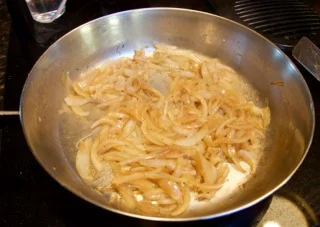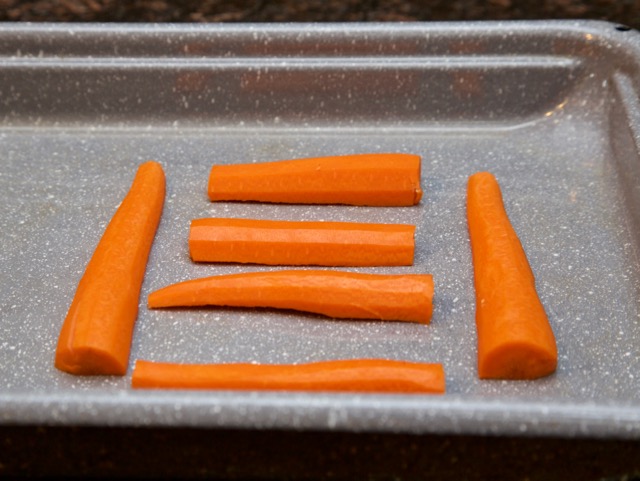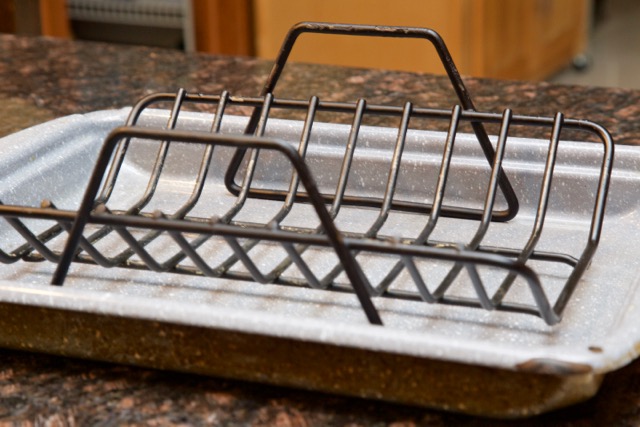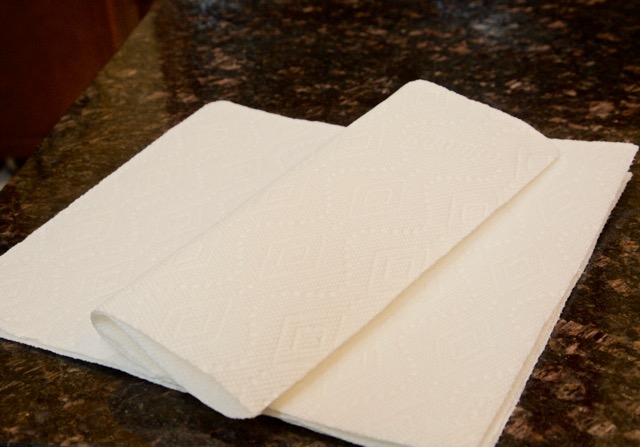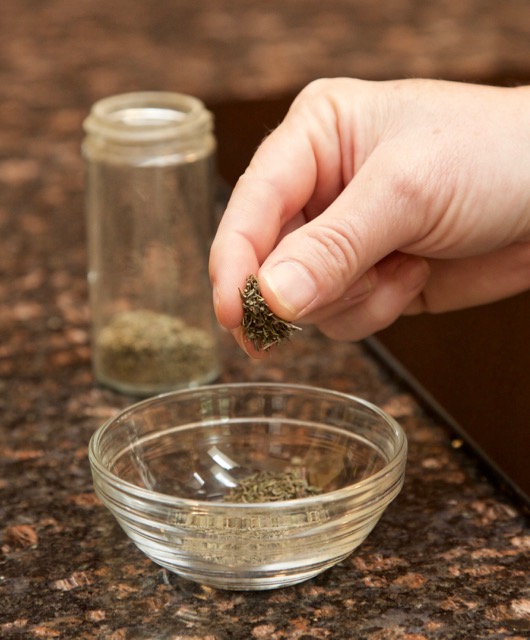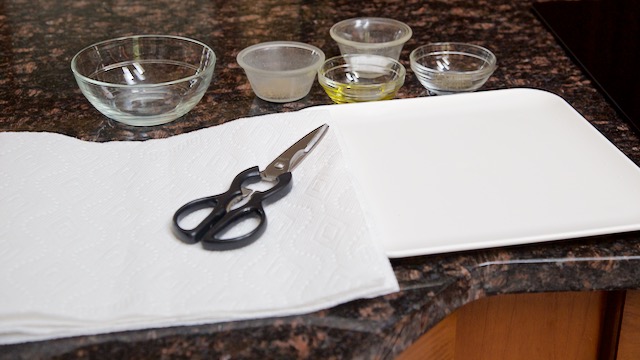This blog focuses on the fundamentals of baking flour-based cookies. Each of the cookies above (please ignore the small candy!) follows the same basic pattern of baking cookies. No actual cookie recipe is followed in this blog, but after reading these instructions you will understand the template for baking cookies.
Read the recipe
It is very important in baking to follow the recipe amounts, so read the recipe carefully. Some recipes require refrigeration for one hour, overnight, or several days. Completely reading the recipe is important.
Assemble your ingredients
The next most important step is to assemble your ingredients and cooking equipment. Remember the term mise en place? There is nothing worse than being halfway through a recipe and realizing you are missing one or two ingredients. Out of brown sugar? Use white sugar and molasses. Out of vanilla? Use maple syrup. Out of flour? Seriously, go to the grocery, but first make sure you have all the other ingredients! Most ingredients have a workaround, but you don't want to stop in the middle of the recipe to Google a substitute.
Preheat the oven?
Now that you understand the steps of the recipe and have all the ingredients assembled, let's talk about the best approach to making cookies. The first step in most cookie recipes is to turn the oven on so that it can properly heat. If you have to refrigerate your dough for any amount of time, then it is wasteful to turn the oven on as a first step. Know the timing of your recipe to know when to turn the oven on.
Room temperature
Make sure that anything cold is at room temperature unless otherwise noted in the recipe. Butter and eggs must be at room temperature. Use a rolling pin to whack the butter to hurry the process along. Add eggs to warm not hot water. Sometimes you want to bake cookies at the last minute and just can't wait. Measure out any refrigerated liquid like milk or cream.
The baking sheet
Prepare the baking sheet. Does it need to be buttered or lined? You will be happy to have the sheet ready when you've finished making the dough. If you need to butter a pan, use butter from the refrigerator. Warm butter coats the sheet with too much butter.
Dry ingredients
Since we are talking about flour-based cookies, we know that the recipe will have flour along with other dry ingredients. All of the dry ingredients need to be combined before being added to the recipe because you want each of the dry ingredients distributed evenly. So thoroughly mix all the dry ingredients in a bowl. It's a good habit to do this before starting the rest of the recipe.
Sifting the flour
Some recipes call for sifting the flour. Let's talk about why this is important and when to do it. From past discussions on flour, we know that flour has to be carefully measured especially when baking using the Spoon and level technique. Too much flour will make cookies dense and dry, too little will make the structure weak and spread too much.
Sifting the flour adds air and removes any clumped flour providing a smoother and lighter texture. Let's talk about the details of sifting. If a recipe calls for "2 cups flour, sifted," this means to measure the flour first and then sift it. If a recipe calls for "2 cups sifted flour," this means to sift the flour into a cup measure and level it off, repeating for the second cup. This distinction is slight, but very important. Read the recipe carefully.
Here is a picture of my sifter. You can see that I sift the flour onto a sheet of wax paper. I level the flour off and then put it into a separate bowl. Repeating this as often as necessary for the required amount of flour. This is because I need 1 cup sifted flour. If I need to sift a pre-measured amount of an ingredient, say 1 teaspoon salt, baking soda, baking powder, or any spices, then I do that directly over my bowl.
Some recipes call for sifting ingredients together. I don't personally think this incorporates the ingredients enough, so I sift each ingredient, add it to a bowl, and then use a whisk to thoroughly combine the ingredients.
Creaming the butter and sugar
If your butter and sugar are at room temperature, you have nothing to worry about. Add them both to the stand mixer and start mixing. If you are using a hand mixer or doing it by hand, mix the sugar into the butter with the tines of a fork or a wooden spoon before staring to beat so that the sugar won't fly everywhere. The goal is to add air into the mixture and make it light and airy. The hand mixture isn't a bad substitute, but get ready for an arm workout if you are using only a spoon or fork. Below are pictures of the progression of the mixture. The result should be light and fluffy.
Adding the eggs
The next step is to add the eggs. I recommend cracking the egg into a small cup or bowl before adding it to the butter/sugar mixture. If any shell breaks off, you will be able to remove it. Add one egg at a time to the mixture and fully incorporate it before adding any additional eggs. I repeat. Add one egg at a time. Mix it in thoroughly before adding any others.
Flavoring
Typically there is a flavoring added. Vanilla extract, lemon juice/zest, or a liquor. This is added after the eggs. Add the flavoring and combine thoroughly.
Add the dry ingredients
Remember the dry ingredients you measured out and combined earlier? Now it's time to add those. Add them to the mixture a little at a time until fully incorporated. Try not to over beat the mixture because it will cause the cookies to be denser.
Other ingredients
Depending on your recipe, you may need to add chocolate chips, raisins, nuts, oats, or whatever. This is the time to do that. Again, try to just combine the ingredients and not over beat them. At this point, your cookie is made.
Back to the recipe
If the dough needs to chill, cover it with plastic wrap and put it into the refrigerator. If the cookies can be baked right away, make sure the oven is on and your pan prepared. Follow the directions for forming the cookie.
Tips on forming cookies
Roll out one pan at a time, then wash your hands. Cookie dough, especially when warm, tends to stick to the palms of your hand making it more difficult to roll out round balls. Space the cookies according to the recipe, typically 1.5-2 inches apart. Most cookies spread, so give them room.
Baking the cookies
Consult the recipe for the recommended temperature and time for baking. If you bake with only one sheet in the oven, remember to turn it back to front halfway through cooking. If you have two sheets, remember to rotate them Front to back, top to bottom halfway through cooking.
Finished baking
Once the cookies are finished baking, remove them from the oven. Some cookies need to be removed from the baking sheet immediately, others need to cool for a few minutes, and others need to have an icing applied directly to the cookie while they are still on the cookie sheet. Again, consult your recipe.
Storage
Most cookies can be stored in an airtight container in the freezer for a couple of months. Make sure you label them so you don't lose them.
Conclusion
This covers the basics of flour-based cookie baking. There's a lot more to learn, but once you have these basic steps mastered, you are on your way to becoming a great baker. By the way, these steps are also relevant to baking a cake. The only difference is that a cake has more liquid and alternates the liquid with the dry ingredients. Add 1/3 of the liquid, then 1/3 of the dry. Repeat, ending with the last of the dry ingredients.


















